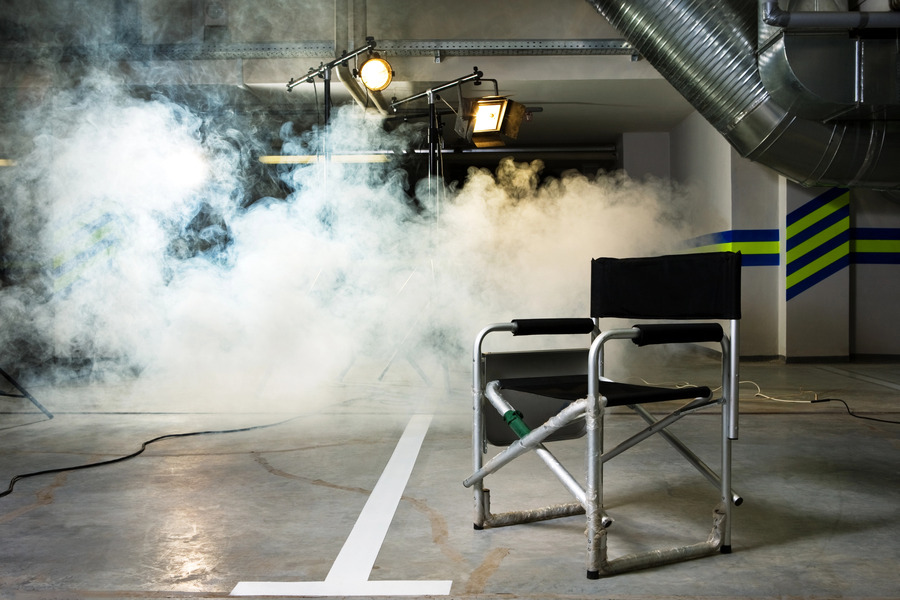
01 Aug Tips for Filming in Small Los Angeles Warehouses
Filming in Small Los Angeles Warehouses –
When it comes to filming in Los Angeles, space can be a major challenge, especially if you’re working in smaller warehouses. At Warehouse 1 Productions, we understand that every square foot counts, and making the most of your available space is crucial for a successful shoot. Whether you’re an indie filmmaker, a commercial producer, or just someone looking to bring a creative vision to life, here are some practical tips to help you maximize space when filming in a small warehouse.
1. Plan Your Layout Carefully
The first step to maximizing space in a small warehouse is careful planning. Before you start moving equipment or setting up your scenes, take the time to sketch out a floor plan. Consider the dimensions of your warehouse and map out where each element will go, including cameras, lighting, props, and actors.
Think about the flow of your shoot as well. Can equipment be moved easily without disrupting the set? Are there clear paths for the crew to navigate? Planning your layout ahead of time will help you avoid clutter and ensure that every inch of your space is used effectively.
2. Use Multi-Functional Sets
In a small warehouse, it’s essential to get creative with your set design. One way to do this is by using multi-functional sets—areas that can serve more than one purpose during your shoot. For example, a simple backdrop might be transformed with lighting and props to become different locations in different scenes.
At Warehouse 1 Productions, we often suggest using modular sets that can be easily reconfigured. Walls on wheels, movable furniture, and versatile props can all help you create multiple settings within the same space, saving both time and money.
3. Optimize Lighting Techniques
Lighting plays a critical role in how a space looks on camera, and in a small warehouse, it can make a big difference. To maximize space, use lighting techniques that require minimal equipment. LED lights are a great option because they are compact, energy-efficient, and can be easily moved around.
Consider using bounce lighting, where light is reflected off walls or ceilings to create a soft, even illumination. This method reduces the need for multiple light sources and helps create a more natural look. Also, take advantage of any natural light your warehouse offers, but be prepared to control it with diffusers or blackout curtains to avoid harsh shadows.
4. Think Vertically
When floor space is limited, think vertically. Utilize the height of your warehouse by building up, not out. Hanging lights, using tall props, and even constructing elevated platforms can add depth and dimension to your set without taking up valuable floor space.
For instance, if you’re shooting a scene in an office setting, consider using shelves or tall filing cabinets as part of the background. These elements can fill the frame and make the space appear larger than it actually is.
5. Declutter and Organize
A cluttered set can make a small space feel even tighter. To keep your warehouse organized, only bring in the equipment and props that are absolutely necessary for each scene. Use storage solutions like rolling carts, wall-mounted racks, or labeled bins to keep everything in its place.
At Warehouse 1 Productions, we recommend keeping a staging area outside the main filming space where you can store items that aren’t immediately needed. This will help keep the set clean and give you more room to work.
6. Use Camera Angles to Your Advantage
Camera angles can dramatically alter the perception of space. Wide-angle lenses, for example, can make a room appear larger, while shooting from a low angle can add a sense of scale and grandeur. Conversely, tight shots can make a small space feel more intimate and focused.
Experiment with different angles and lenses to find the best way to capture your scenes. Don’t be afraid to get creative—sometimes the most interesting shots come from unconventional setups.
7. Consider Sound Management
Sound is another critical factor to consider when working in a small warehouse. Soundproofing can be challenging, but it’s important to minimize echo and outside noise. Soft materials like carpets, foam panels, and heavy curtains can help absorb sound and create a better recording environment.
If soundproofing the entire space isn’t feasible, focus on the areas where sound will be most critical, such as dialogue scenes. You might also consider recording some audio separately and syncing it in post-production.
8. Leverage the Flexibility of Small Spaces
One of the benefits of filming in a small warehouse is the flexibility it offers. Smaller spaces can be easier to control, allowing you to make quick adjustments to lighting, set design, or camera angles without needing to relocate large amounts of equipment. This can lead to a more efficient shooting process, with less downtime between takes.
9. Collaborate with Your Crew
Finally, make the most of your space by collaborating closely with your crew. Clear communication is key to ensuring that everyone understands the limitations of the space and works together to maximize its potential. Encourage your team to share ideas and solutions for making the most of the warehouse environment.
Filming in a small warehouse in Los Angeles comes with its own set of challenges, but with careful planning and a creative approach, you can turn even the most modest space into a dynamic and versatile filming location. At Warehouse 1 Productions, we’re here to help you make the most of every square foot, offering a range of adaptable spaces and expert advice to ensure your project runs smoothly. By following these tips, you’ll be well on your way to creating compelling, professional-quality footage, even in the smallest of spaces. Contact us to learn more.

Sorry, the comment form is closed at this time.